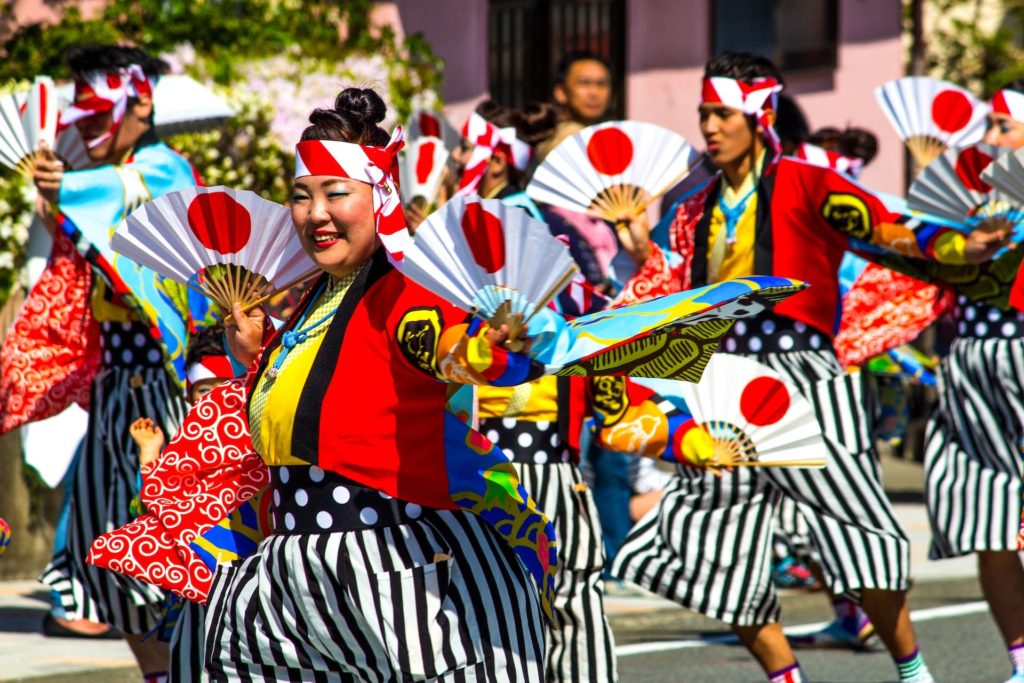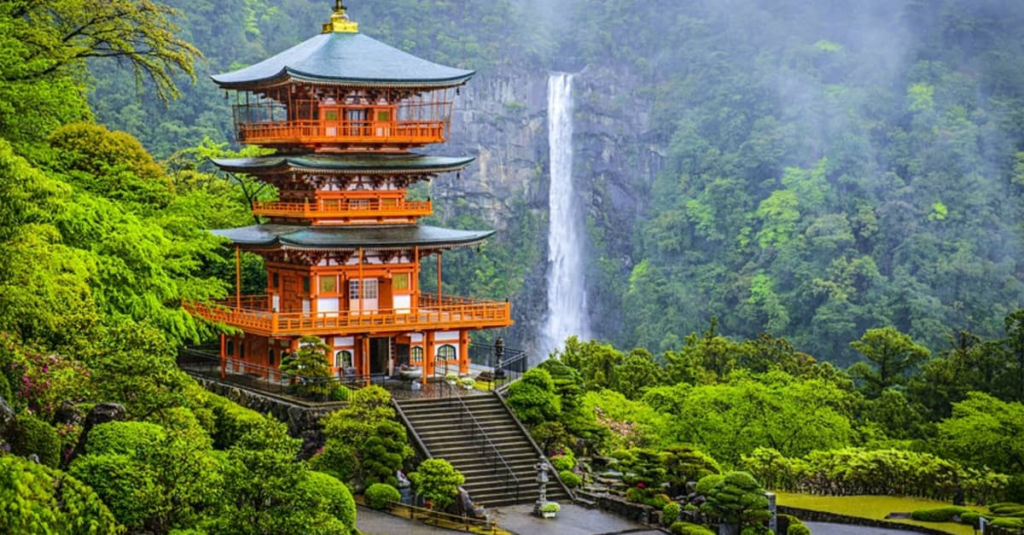EXPLORING THE ESSENCE OF JAPAN
1.Japanese Culture

- Traditional Arts:
- To begin with, Japan boasts a deep cultural heritage, which is exemplified by its traditional arts such as ikebana (flower arranging), as well as the tea ceremony, not to mention calligraphy, and the iconic kimonos. These practices, deeply rooted in Japanese philosophy, emphasize beauty, simplicity, and respect, making them an integral part of the country’s cultural identity.
- Language:
- : Additionally, the Japanese language features three writing systems: hiragana, katakana, and kanji (characters borrowed from Chinese). The language reflects the values of respect and hierarchy, which is evident in its honorifics and formal speech.
- Festivals:
- Moreover, Japan celebrates a variety of seasonal festivals, such as Hanami (cherry blossom viewing) in spring, Tanabata (star festival), Obon (a time to honor ancestors), and Setsubun (marking the beginning of spring).
- Cuisine:
- Finally, Japanese cuisine is renowned for its simplicity, focusing on seasonal ingredients. Iconic dishes include sushi, sashimi, tempura, and ramen. Eating is often seen as an art, with a strong emphasis on presentation and balance.
2.Japanese History

- Ancient Japan:
- First, the earliest civilizations in Japan date back to the Jomon period (14,000–300 BCE). Over time, the country was influenced by Chinese culture, and Buddhism arrived during the Asuka period (538–710 CE).
- Feudal Era:
- Next, Japan entered a feudal system under the rule of samurai during the Kamakura period (1185–1333). The shogunate (military government) and samurai warriors dominated Japan until the Meiji Restoration in 1868
- Meiji Era:
- Following this, Japan transformed from a feudal society to a modern industrial nation during the Meiji period (1868–1912). This marked Japan’s entry into global politics, culminating in its rise as a major world power.
- World War II and Postwar Period:
- Lastly, Japan’s involvement in WWII led to its defeat and occupation by the Allies. After the war, Japan emerged as a major economic power, known for its technological advances and innovations.
3.Japanese Nature

- Mountains and Volcanoes:
- To start with, Japan is a mountainous archipelago, with 73% of its land covered by mountains, many of which are volcanic. Mount Fuji, an active volcano and the highest peak, is one of Japan’s most iconic natural symbols.
- Hot Springs (Onsen):
- In addition, cherry blossoms bloom in spring, and people gather to view the flowers in a tradition called hanami. The short-lived blossoms symbolize the beauty of impermanence in Japanese culture.
- Wildlife:
- Finally, Japan is home to unique wildlife, such as the Japanese macaque (snow monkey), Japanese red-crowned crane, and various species of deer and bears. Many national parks and wildlife sanctuaries exist throughout the country to protect this diverse nature.
These aspects of Japanese culture, history, and nature provide international students with a holistic understanding of the country, enriching their educational journey in Japan.
